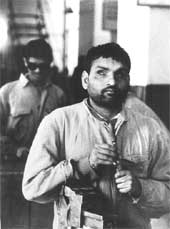Aye for an eye
 under a collaborative experimentation effort between the L V Prasad Eye Institute in Hyderabad and an American team under surgeon Manuel del Cerro from the University of Rochester, New York, eight blind persons have received tissue transplant from aborted foetuses. Of the eight patients who received the foetal retinal cells about a year ago in Hyderabad, two patients could make out smudgy images when a hand was held in front of them. One person could count fingers at the same distance, claim the doctors.
under a collaborative experimentation effort between the L V Prasad Eye Institute in Hyderabad and an American team under surgeon Manuel del Cerro from the University of Rochester, New York, eight blind persons have received tissue transplant from aborted foetuses. Of the eight patients who received the foetal retinal cells about a year ago in Hyderabad, two patients could make out smudgy images when a hand was held in front of them. One person could count fingers at the same distance, claim the doctors.
This is the first successful attempt to reverse blindness due to retinitis pigmentosa, a genetic disorder that afflicts millions worldwide. It also opens up tremendous opportunities to reverse other forms of blindness. According to Stephen Hughes, associate director of research at Albany Medical College, New York, the human eye lends itself nicely to transplants mainly because the structured layers of the retina make it possible to isolate specific types of cells and put them in again.
The retina, which lines the rear of the eye ball, is the part that responds to light sources from outside and relays visual information to the brain. It is made up of nerve cells, including what are called
Related Content
- First food: business of taste
- State of the Climate in Asia 2024
- Order of the National Green Tribunal regarding the deplorable condition of a water tank, Golconda Fort, Hyderabad, Telangana, 05/06/2025
- Order of the National Green Tribunal in the matter of Futala lake pollution, Nagpur, Maharashtra, 05/06/2025
- Order of the National Green Tribunal regarding large scale felling of toddy yielding palm trees in Bihar, 05/06/2025
- Order of the National Green Tribunal regarding deterioration of Nayar river, Uttarakhand, 05/06/2025
